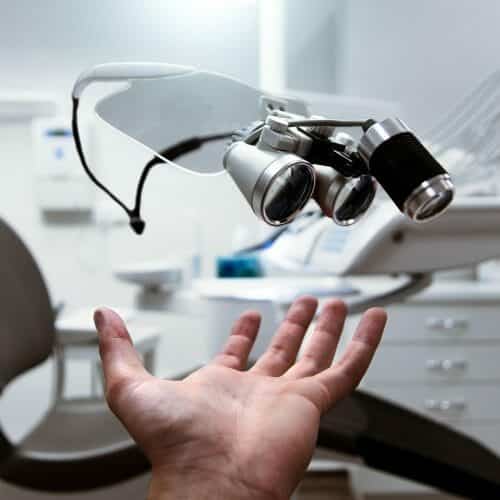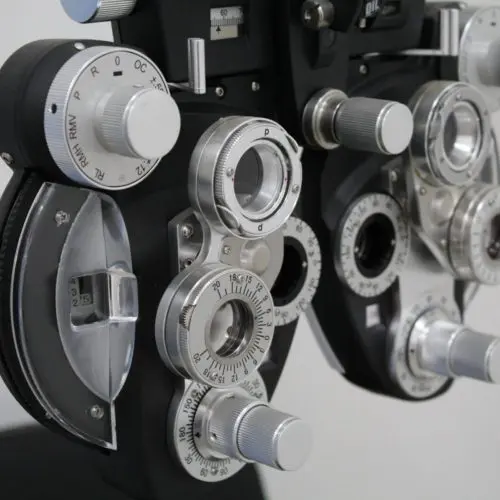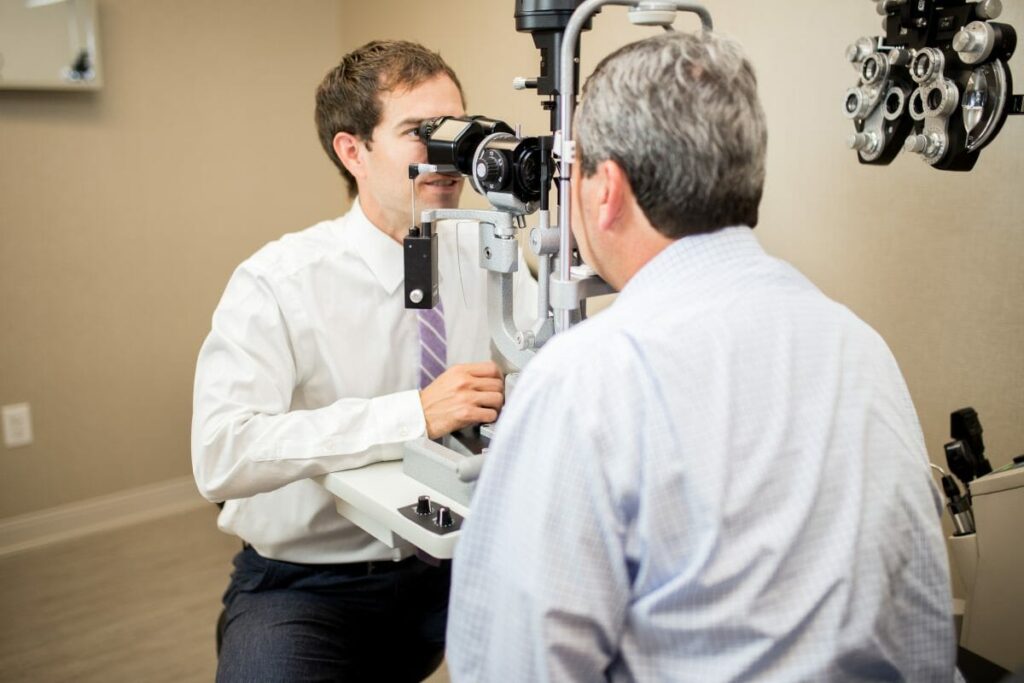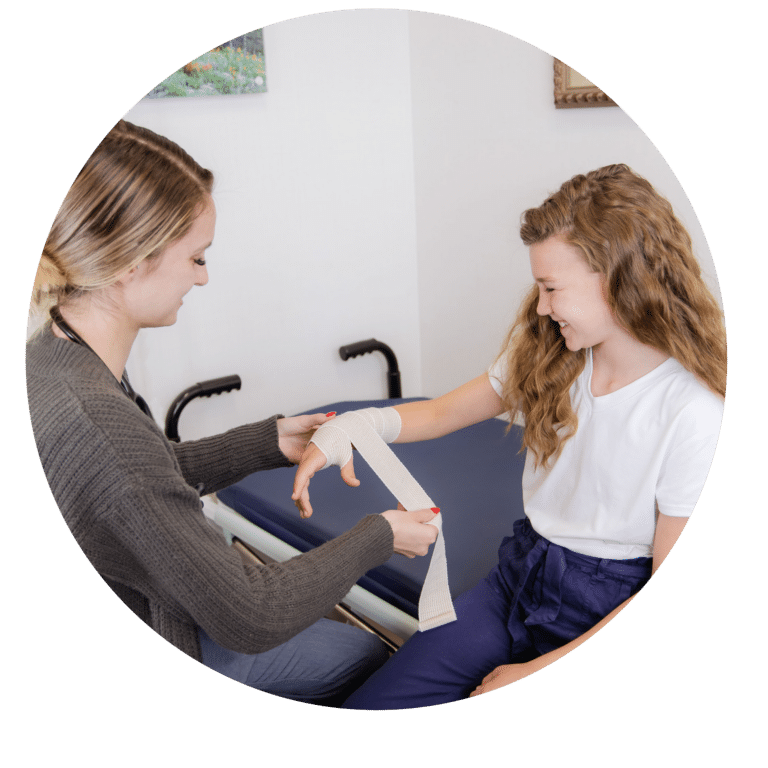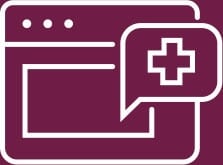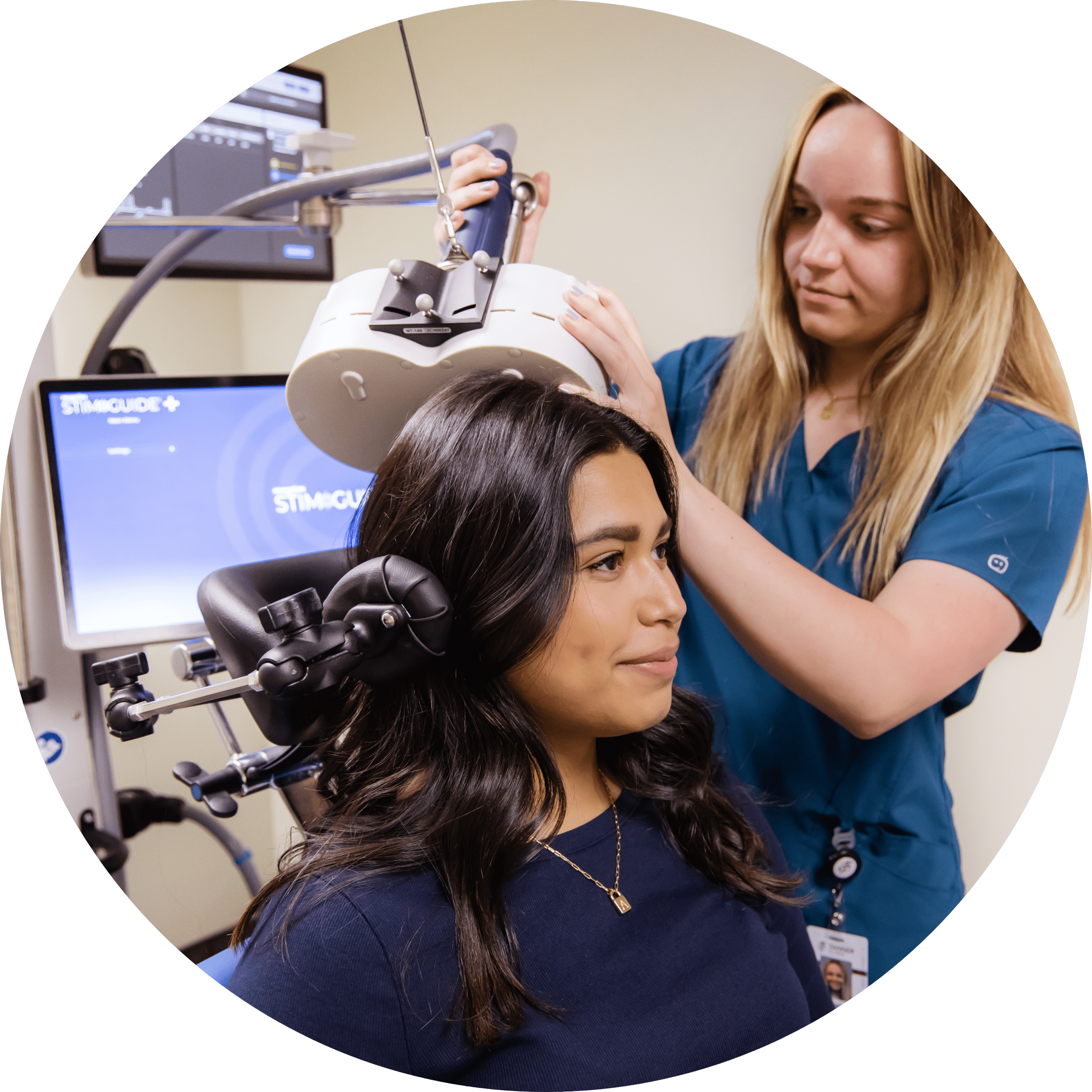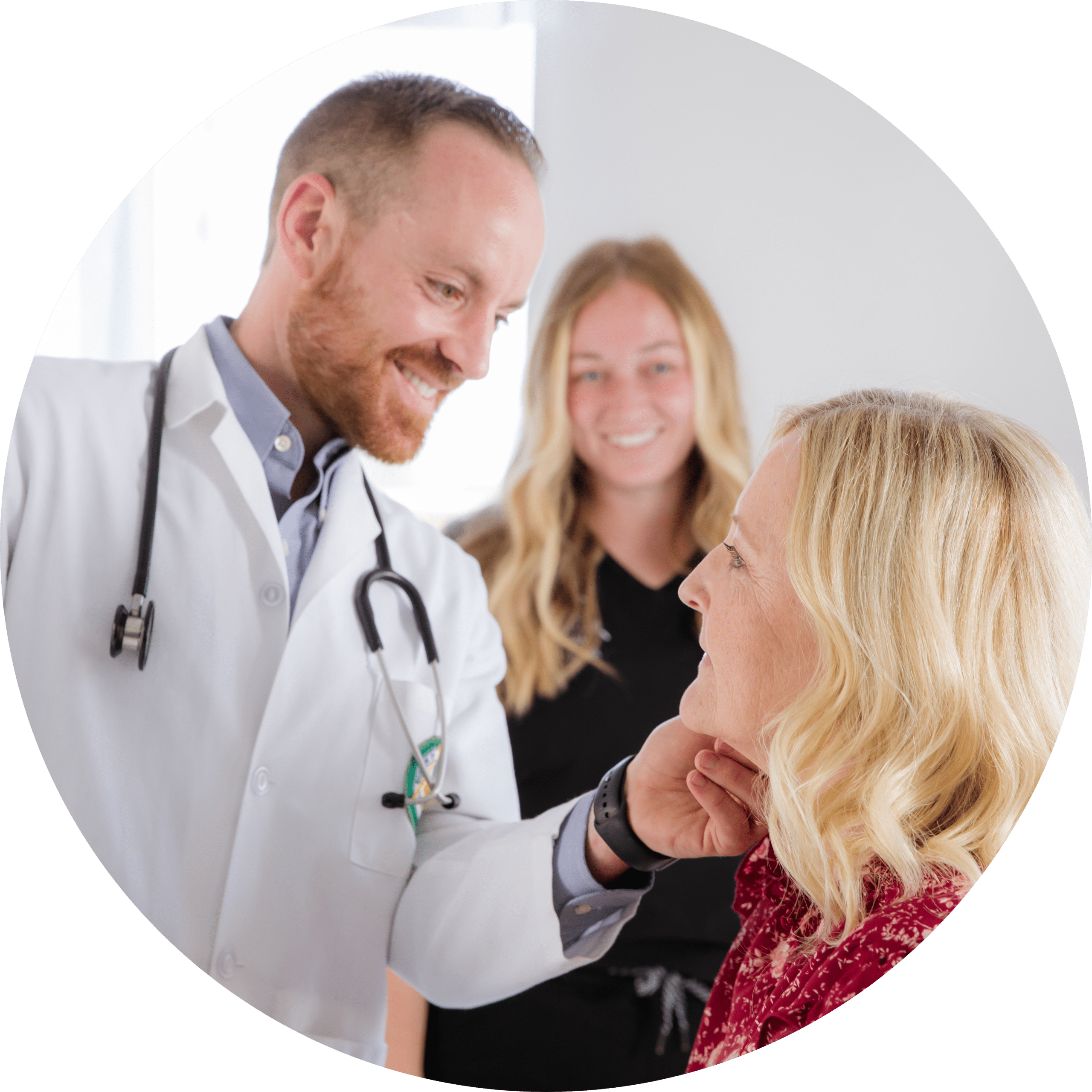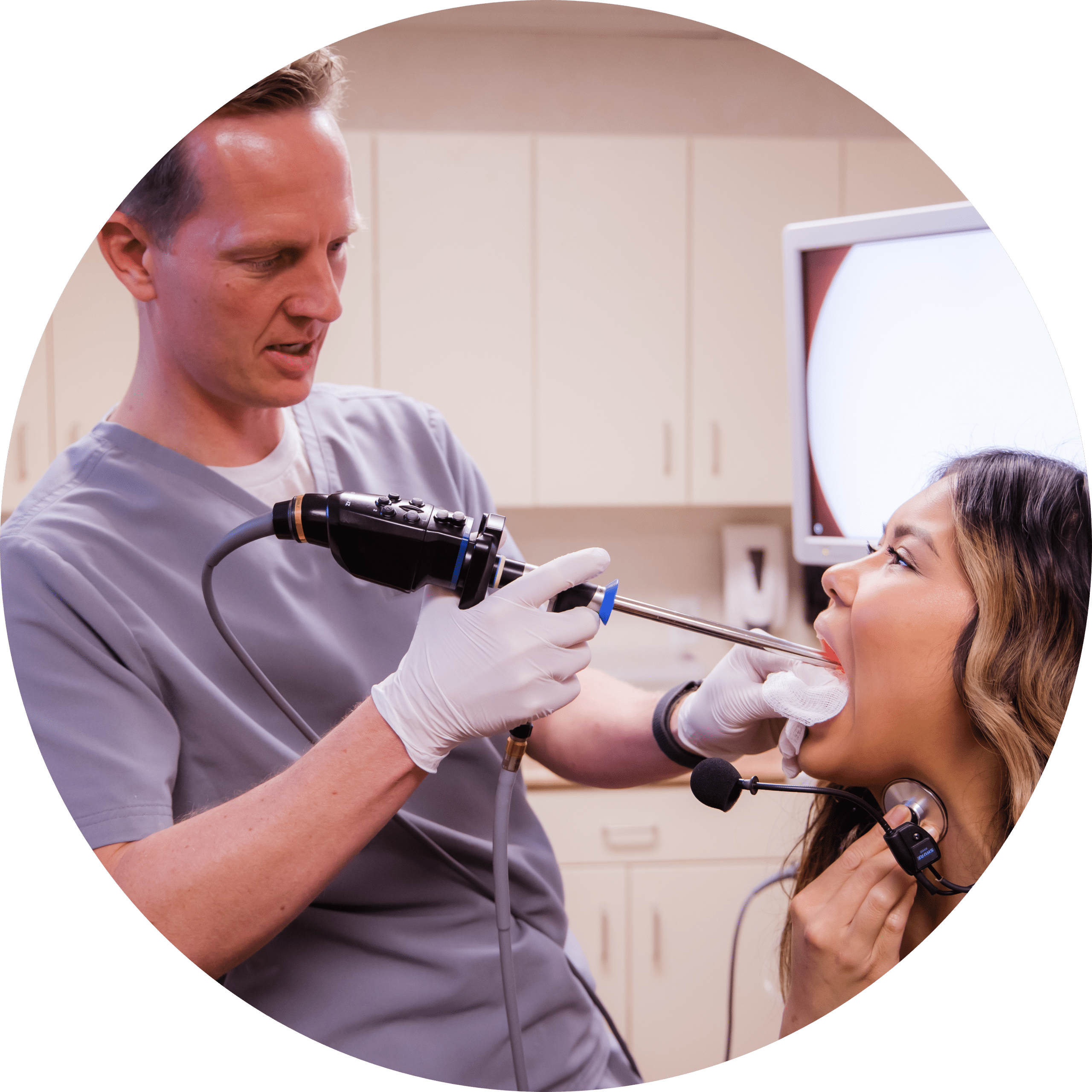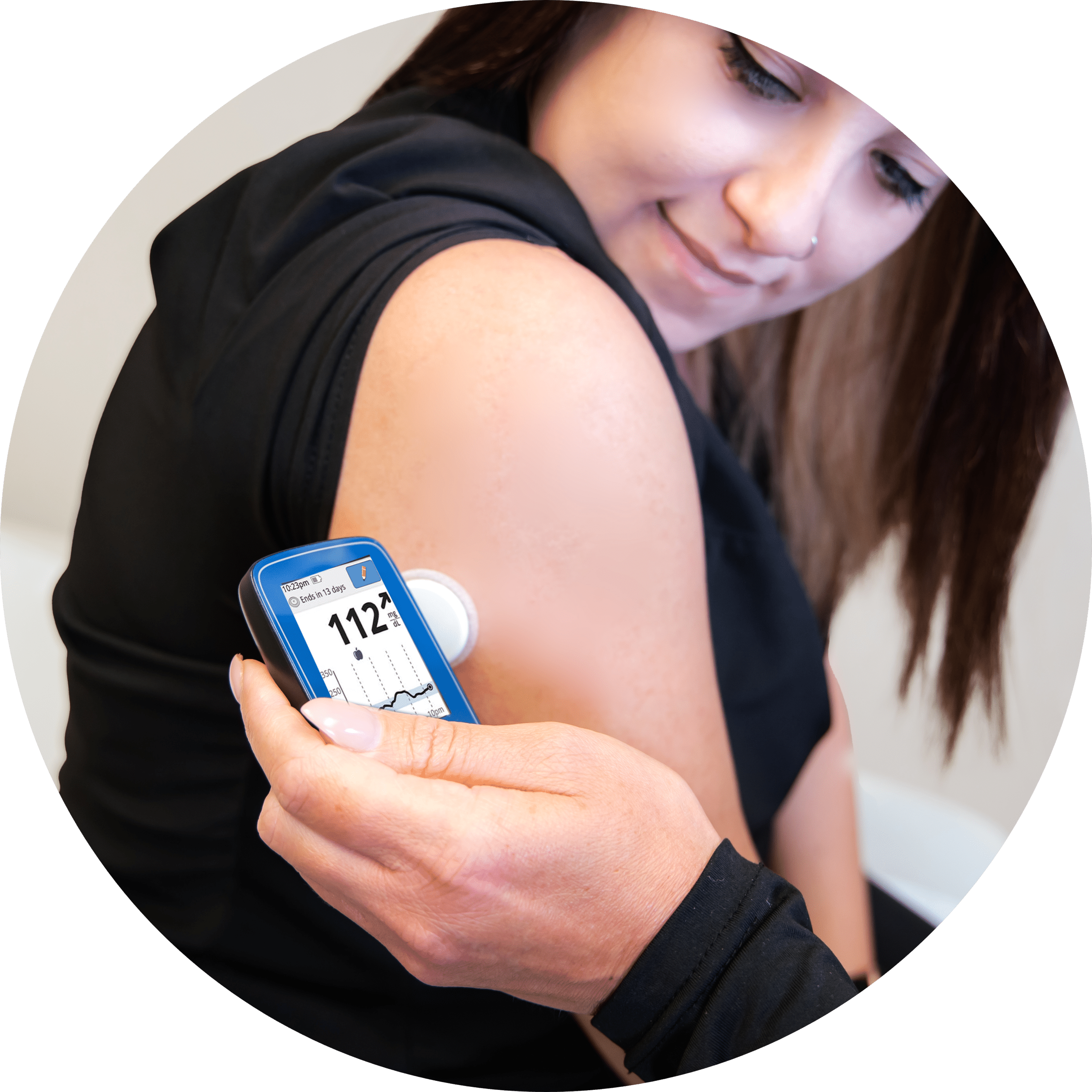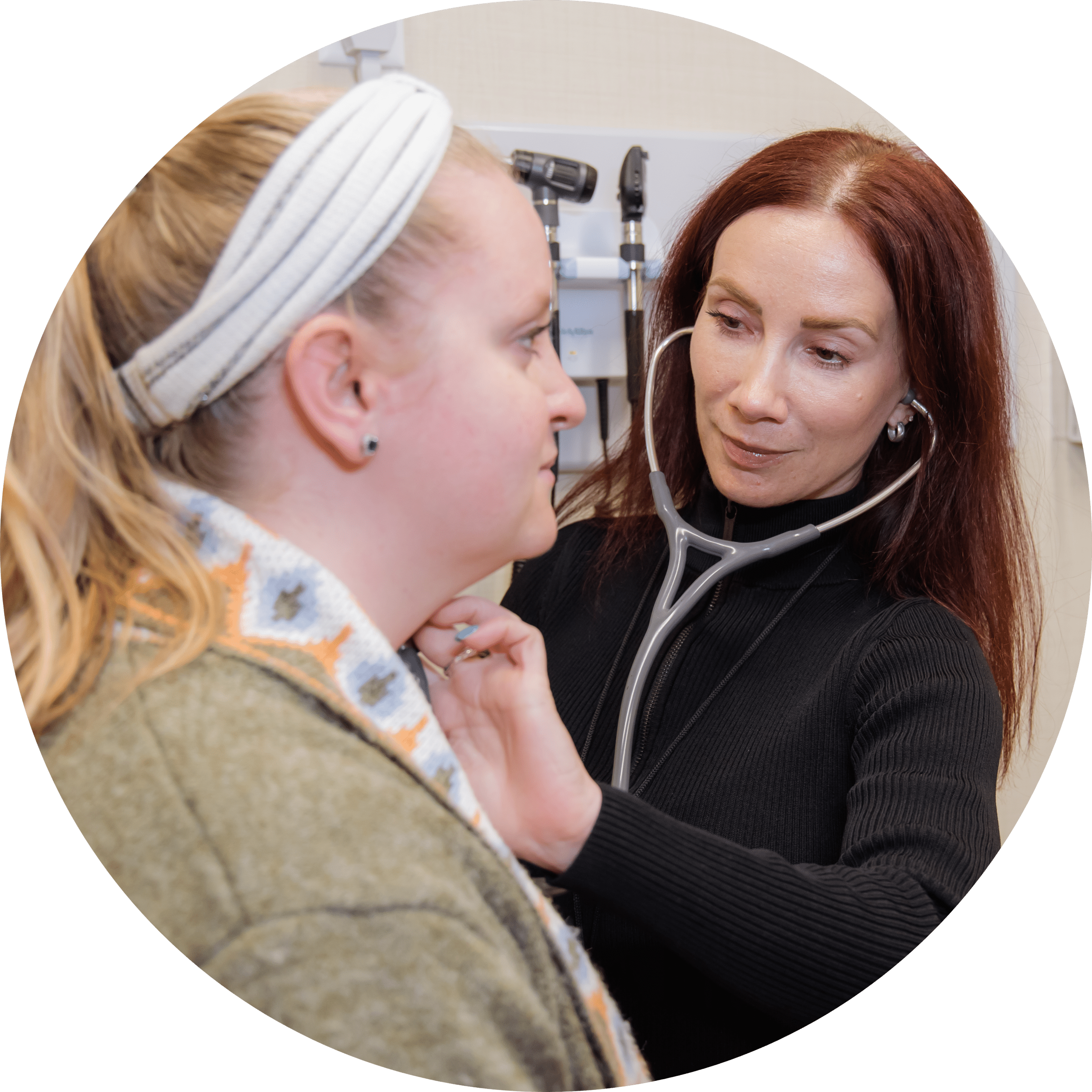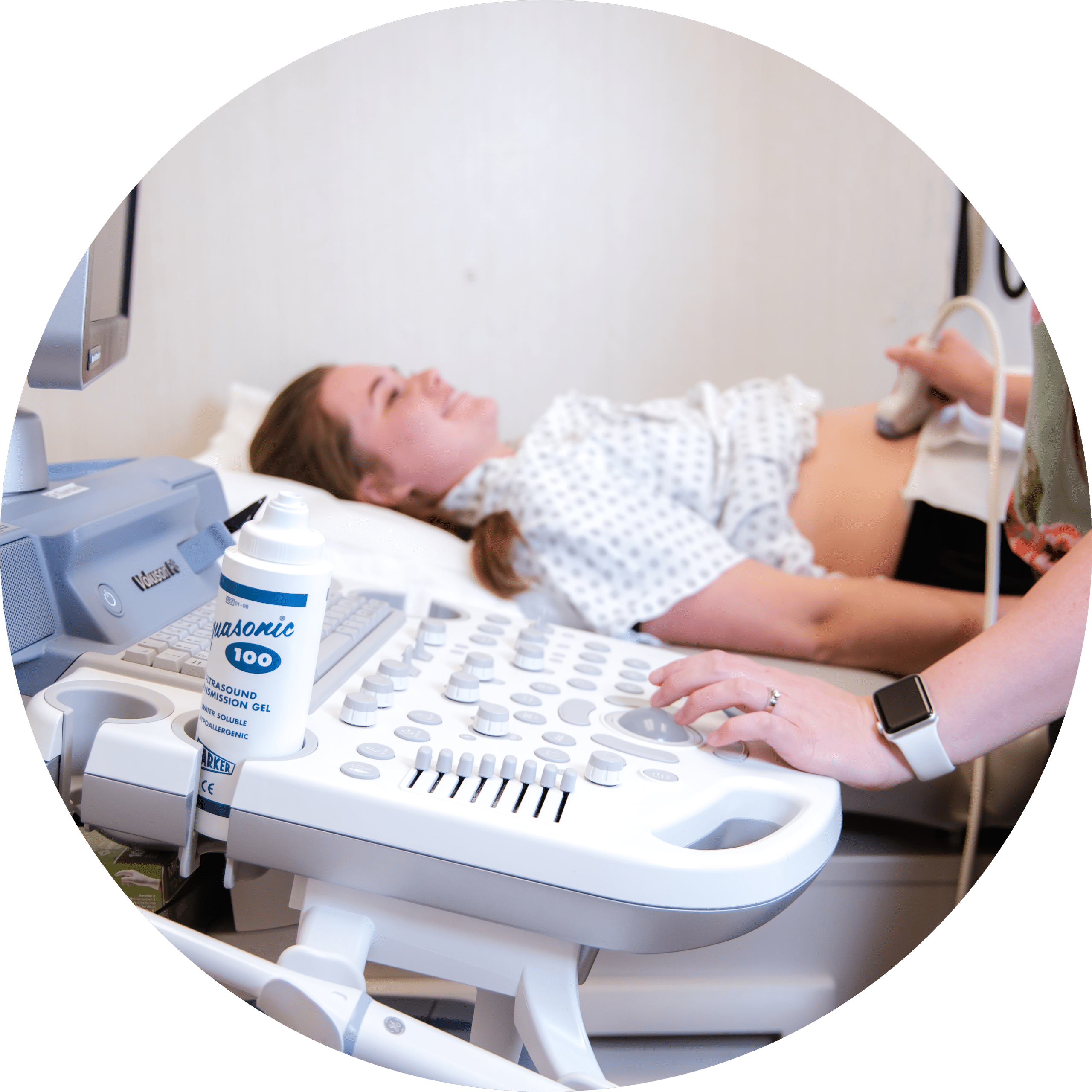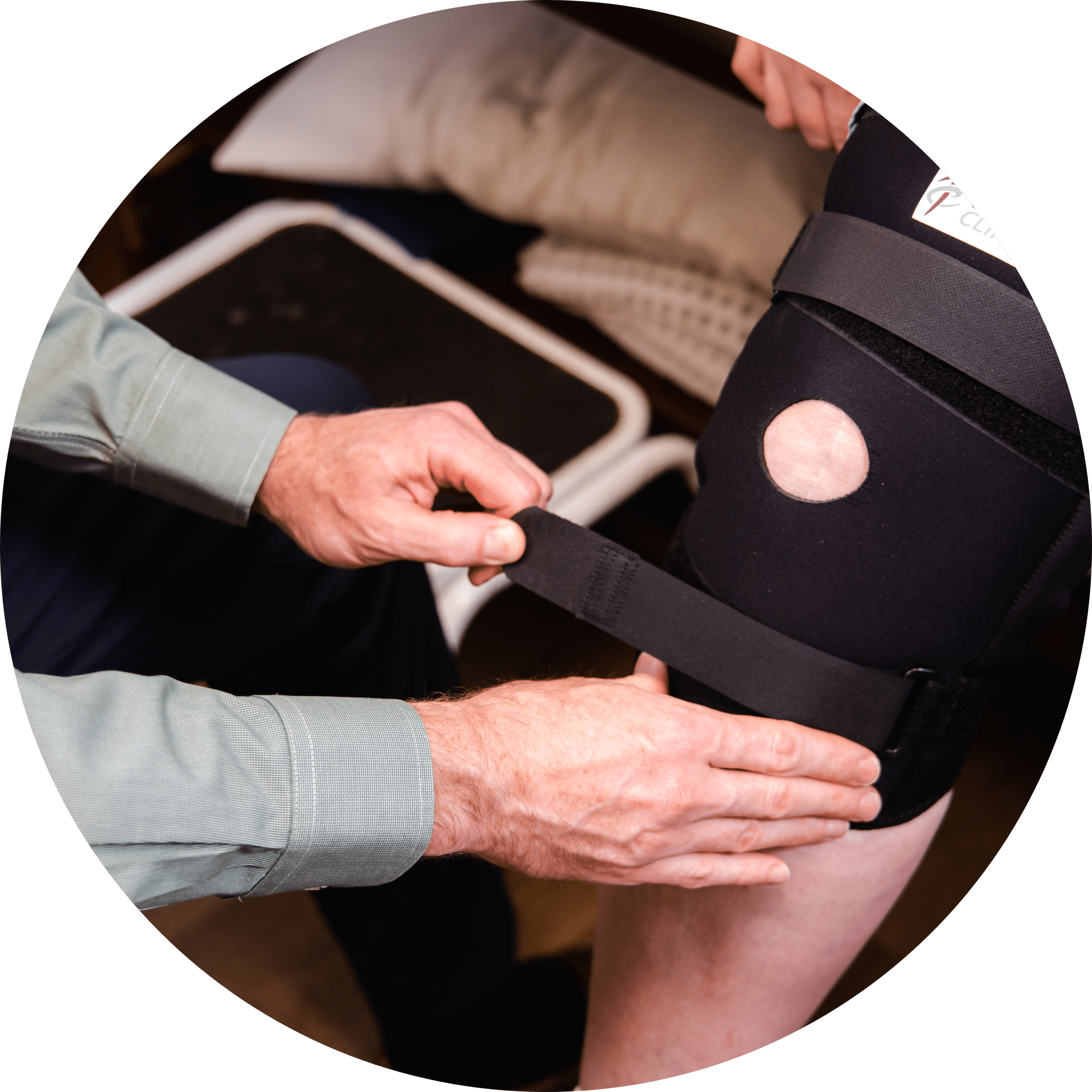Medical situations can occur at any moment without notice. You might wake up in the middle of the night to a screaming baby with a high temperature, or you might land on your ankle wrong during a workout. When an emergency happens, you might not know where to turn for care. How will you know when to visit urgent care?
If you have ever been conflicted about whether you should go to an urgent care clinic, the emergency room, or wait to schedule an appointment with your doctor, you aren’t the only one. Patients will often spend more money at the ER when an urgent care physician would be better suited to treat their symptoms. Understanding which medical facilities offer the best treatment options for your condition can save you time, money, and unnecessary follow-up visits.
Tanner Clinic offers Urgent Care for both children and adults in Layton, Kaysville, Syracuse, Roy, Clinton, and East Layton, Utah. In this guide, our medical professionals outline the differences between urgent care, the emergency room, and a walk-in clinic, and where you should seek treatment for various medical emergencies.
Our doctors recommend calling the Urgent Care clinic to discuss your symptoms with a trained, licensed professional if you are ever in doubt as to which medical facility to visit. A preliminary call with a nurse to help you assess whether your symptoms warrant a visit to the urgent care, emergency room, or doctor’s office will also prevent overcrowding hospitals with manageable illnesses and injuries. Of course, if you are experiencing uncontrollable bleeding, chest pain, difficulty breathing, or another life-threatening situation, you should go to an emergency room immediately or call 911.
For non-life-threatening medical situations, here is what you should know when deciding whether to visit an urgent care, emergency room, or doctor’s office.
WHEN TO GO TO AN URGENT CARE
The key to knowing where you should go when seeking medical care is understanding the difference between urgent care, emergency rooms, and appointments with your doctor. There are distinct differences between each medical facility and the level of care each provides.
If you are experiencing mild symptoms and need more immediate care, urgent care clinics are an after-hours solution to your regular doctor. Urgent care clinics offer extended hours, seven days a week. These clinics provide treatment when your regular doctor isn’t available, and you can’t wait for an appointment.
The medical professionals at an urgent care facility offer experienced care and access to the equipment needed to treat a variety of illnesses and injuries. However, these clinics aren’t capable of providing specialized treatment for life-threatening illnesses and injuries.
Instead, urgent care clinics fill the gap between visits to the doctor’s office and the emergency room, especially when you are sick or injured when your regular doctor is unavailable. These illnesses and injuries include minor issues that are non-life-threatening but need immediate attention. When these occur, you can visit an urgent care clinic or after-hours care.
If you are experiencing these symptoms, consider visiting an urgent care clinic:
- Ear Pain
- Mild Asthma
- Rashes and Skin Irritations
- Dehydration
- Fever
- Sore Throat
- Common Cold Symptoms
- Vomiting
- Minor Traumas (like fractures, sprains, or shallow cuts)
- Nose Bleeds
- Minor Burns
- Infections
- Diarrhea
- Painful Urination
If any of your symptoms are gradual or a repeated symptom, consider calling your primary care provider for a same-day appointment. While urgent care clinics can treat these symptoms, your primary physician is more familiar with your health history and can manage your care and treatment plan.
Another difference between emergency rooms and urgent clinics is that urgent care clinics offer medical treatment during extended hours operations, whereas emergency rooms are open 24 hours a day.
Urgent care clinics are a great resource for when you need treatment fast. Please visit a Tanner Clinic Urgent Care facility for your urgent care needs.
DETERMINING YOUR COST FOR VISITING URGENT CARE
The cost of visiting an urgent care clinic is significantly lower than an emergency room. If you have medical insurance, your insurance company will cover the majority of the cost. However, you are responsible for the co-pay. Copays for urgent care visits usually cost more than a doctor’s office visit but significantly lower than one to an emergency room.
When you are experiencing a mild medical emergency, visiting an urgent care clinic will ensure you get the best care for the right price. In fact, many insurance companies won’t cover your visit to an ER if it involves non-emergency care. To determine the exact cost of visiting an urgent care clinic, check with your insurance company. You can also contact a Tanner Clinic Patient Account support representative at 801-773-4840.
WHEN TO GO TO THE EMERGENCY ROOM
Emergency rooms are there to handle the most complex and critical medical emergencies. Unlike urgent care clinics, hospital emergency departments have the medical staff and equipment to handle life-threatening illnesses and injuries. While emergency rooms can also handle lesser medical situations, the function of the ER is to get you to a stable condition where your medical situation can be treated with outpatient care.
Hospital emergency departments treat a variety of medical emergencies, including heart attacks to traumatic injuries. Since several medical conditions are considered emergencies, it is important to know whether you require the rapid and advanced treatment provided in an emergency room.
If you’re experiencing any of these symptoms, visit an emergency room or call 911:
- Crushing Chest Pain
- Severe Bleeding
- Signs of a Stroke that include sudden symptoms, including:
- Severe Headache
- Weakness or Paralysis
- Heart Palpitations
- Pain and Swelling
- Difficulty Speaking
- Difficulty Understanding Speech
- Vision Changes (blurred, double vision, full/partial loss of vision)
- Broken Bones
- Dislocated Joints
- Persistent Chest Pains
- Follow with sweating, vomiting, or shortness of breath
- Newborn Baby with a Fever
- Head Injuries
- Severe Cold or Flu Symptoms
- Serious Burns
- Seizures
- Deep Cuts
- Large Wounds
- Wounds that Won’t Stop Bleeding
- Eye Injuries
- Severe Vomiting or Diarrhea
-
Go directly to an emergency room if you’re having serious symptoms such as intense pain, which could indicate inflamed appendicitis, gallbladder attack, or a kidney stone.
If you are experiencing mild symptoms such as a sore throat, urinary tract infection, or earache, consider calling your primary care physician first. If your doctor is unavailable, you can also visit an urgent care clinic for immediate care. Although emergency rooms can handle any medical situation, they should be used for the most critical situations rather than as a primary physician for mild cases.
A good tip to keep in mind is if your primary care physician or urgent care doctor thinks you need a higher level of care, they will recommend that you go to the emergency room.
DETERMINING YOUR COST FOR VISITING THE ER
The average cost for an emergency room visit varies depending on your insurance coverage. If you do not have health insurance, a trip to the emergency room can cost several thousand dollars. Your total cost will depend on the level of treatment you receive. When you need critical care, these charges could run into the tens of thousands of dollars.
The average copay for emergency room services is around $250 if you are insured. This cost also depends on your insurance company. Some insurance coverage requires you to pay the entire bill if you have not met your plan’s annual deductible. A deductible must meet the IRS 2020 minimum, which is currently $1,400 under an individual plan and $2,800 for a family. This amount may also be even higher according to your plan.
Ambulance transfers are typically not covered in your emergency room fee. The additional cost can be over $1,000, depending on your location and the services rendered. In rare cases, when you require an air ambulance, the cost can be even higher.
Since there is such a fluctuation in ER costs, you can best determine the cost of an emergency room visit by speaking with your insurance provider. You can also speak with a financial counselor at Tanner Clinic to review all your options.
WHEN TO CALL 911
Calling 911 might be your safest bet in an emergency. First of all, never drive yourself to the emergency room if you have severe chest pain or severe bleeding, or if you feel faint or have impaired vision.
If you are having a heart attack or stroke, call 911 immediately. In these cases, paramedics will deliver life-saving treatment on the way to the hospital that you cannot handle on your own.
If you believe you don’t need immediate lifesaving care, have someone drive you to the emergency room. What matters most is that you get to the emergency room as quickly and safely as possible.
DETERMINING YOUR COST FOR CALLING 911
Calling 911 is free but riding in an ambulance is not. This cost depends on your location. Usually, you will need to pay the initial pick-up fee. Ground transportation can vary from $500 to $1,000. The cost of an air ambulance can cost tens of thousands of dollars.
After paying for the initial cost of an ambulance, you will need to cover the per-mile charge which can range between $10-$30 in an ambulance. However, if you are using air transportation, you will pay several hundred dollars for every mile.
The reason why the cost of calling 911 and receiving transportation services is so high is that ambulance companies don’t hold contracts with insurance companies. Since insurance doesn’t cover ambulance costs, you will essentially cover the entire bill out-of-pocket.
Medicare is the exception. Those insured by Medicare can call an ambulance in an emergency and have their costs covered.
WHEN TO SCHEDULE AN APPOINTMENT WITH YOUR DOCTOR
Your primary care physician plays an integral role in your medical care. Since they know your medical history, they are the best fit to help you with any long-term illnesses or non-emergency care. Urgent care clinics and emergency rooms are useful during urgent medical situations when your doctor is unavailable. Plus, the co-pay for visiting your doctor’s office costs far less than a trip to the emergency room.
You won’t need to wait long, either. Doctor’s offices typically have short wait times with openings for an appointment every day. Even if your doctor is unavailable, they can refer you to a specialist or another medical professional when needed.
Primary care doctors perform the following health care services regularly:
Diagnostics and Screenings: Your doctor is a generalist, patient educator, and care coordinator. Visit your primary care physician to discuss your symptoms. They will ask you questions, perform a physical examination, order lab work or X-rays, and write prescriptions to help manage your symptoms. They will also consider your medical history in their diagnosis. If you need further testing and treatment, they will refer you to a specialist.
Referral to Specialists: If you require additional care, your primary care physician will refer you to a specialist. For example, if you are experiencing chronic foot pain, your primary care doctor will likely send you to a podiatrist specializing in treating feet.
Preventive Health Care: One of the main reasons we visit our primary health care physicians is our annual medical exam. Your family doctor’s main role is to provide preventive health care services so that you can catch any life-threatening conditions early. These services include annual wellness exams, vaccinations, cholesterol, and cancer screenings.
DETERMINING YOUR COST FOR VISITING THE DOCTOR
If you have insurance, your out-of-pocket costs for a doctor’s office visit will vary. The factors that determine your cost depends on your coverage, where you live, reason for visiting, the tests and treatments you receive, and competition in the area. Your co-pay will not cover any additional costs for prescription drugs or treatments performed by specialists.
The average cost of a 15-minute visit with a primary care doctor ranges from $48 to $131. You can expect to pay that amount if you receive general care or a moderate problem that requires counseling and treatment.
If you are a new patient booking a 20-minute office visit, the cost will increase to about $66 to $152, on average. You can figure out your exact cost of visiting your primary care doctor by speaking with your insurance provider. You can also speak with a financial counselor at Tanner Clinic to review all your options.
NEXT STEPS
If you need to visit an urgent care clinic or make an appointment with a primary care doctor, trust Tanner Clinic. Come and experience the difference our physicians provide to patients at our seven locations across Davis and Weber Counties in Utah. You can schedule an appointment online with a primary care doctor or contact us to learn more about our primary care services.
Tanner Clinic also offers extended Urgent Care hours for both children and adults in Layton, Kaysville, Syracuse, Roy, and East Layton, Utah. Our walk-in centers provide less expensive treatment options when compared to emergency rooms. Please visit us if you have any injuries and illnesses that are not life-threatening but need immediate attention. These include injuries and illnesses such as earaches, coughs, fevers, rashes, insect and animal bites, nausea and vomiting, diarrhea, minor burns, and lacerations.
This facility is not used for medication refills, physicals, or other needs that a primary care physician can take care of by appointment.
If you or a loved one is experiencing stroke symptoms, difficulty breathing, coughing up or vomiting blood, head injuries with loss of consciousness, heat stroke or dehydration, severe bleeding, chest pain, or any symptoms of a life-threatening problem, call 911 or go to your nearest emergency room.
Click here if you are looking for an urgent care clinic in Layton, please visit Tanner Clinic.


